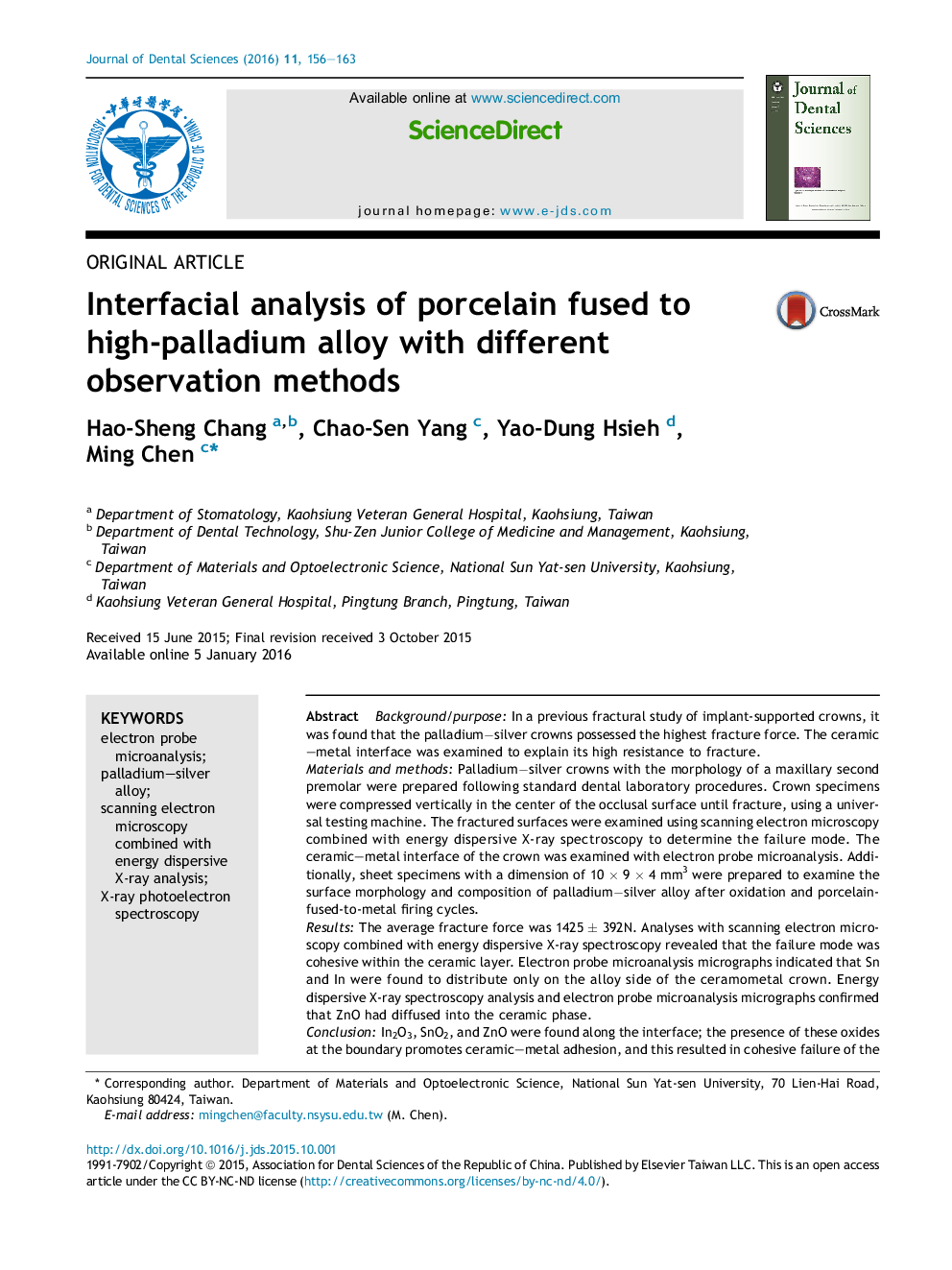| کد مقاله | کد نشریه | سال انتشار | مقاله انگلیسی | نسخه تمام متن |
|---|---|---|---|---|
| 3145443 | 1197077 | 2016 | 8 صفحه PDF | دانلود رایگان |
Background/purposeIn a previous fractural study of implant-supported crowns, it was found that the palladium−silver crowns possessed the highest fracture force. The ceramic–metal interface was examined to explain its high resistance to fracture.Materials and methodsPalladium−silver crowns with the morphology of a maxillary second premolar were prepared following standard dental laboratory procedures. Crown specimens were compressed vertically in the center of the occlusal surface until fracture, using a universal testing machine. The fractured surfaces were examined using scanning electron microscopy combined with energy dispersive X-ray spectroscopy to determine the failure mode. The ceramic–metal interface of the crown was examined with electron probe microanalysis. Additionally, sheet specimens with a dimension of 10 × 9 × 4 mm3 were prepared to examine the surface morphology and composition of palladium−silver alloy after oxidation and porcelain-fused-to-metal firing cycles.ResultsThe average fracture force was 1425 ± 392N. Analyses with scanning electron microscopy combined with energy dispersive X-ray spectroscopy revealed that the failure mode was cohesive within the ceramic layer. Electron probe microanalysis micrographs indicated that Sn and In were found to distribute only on the alloy side of the ceramometal crown. Energy dispersive X-ray spectroscopy analysis and electron probe microanalysis micrographs confirmed that ZnO had diffused into the ceramic phase.ConclusionIn2O3, SnO2, and ZnO were found along the interface; the presence of these oxides at the boundary promotes ceramic–metal adhesion, and this resulted in cohesive failure of the ceramic layer. ZnO was found to diffuse into the ceramic phase, and it is suggested to be beneficial for high fracture resistance in the present study.
Journal: Journal of Dental Sciences - Volume 11, Issue 2, June 2016, Pages 156–163
